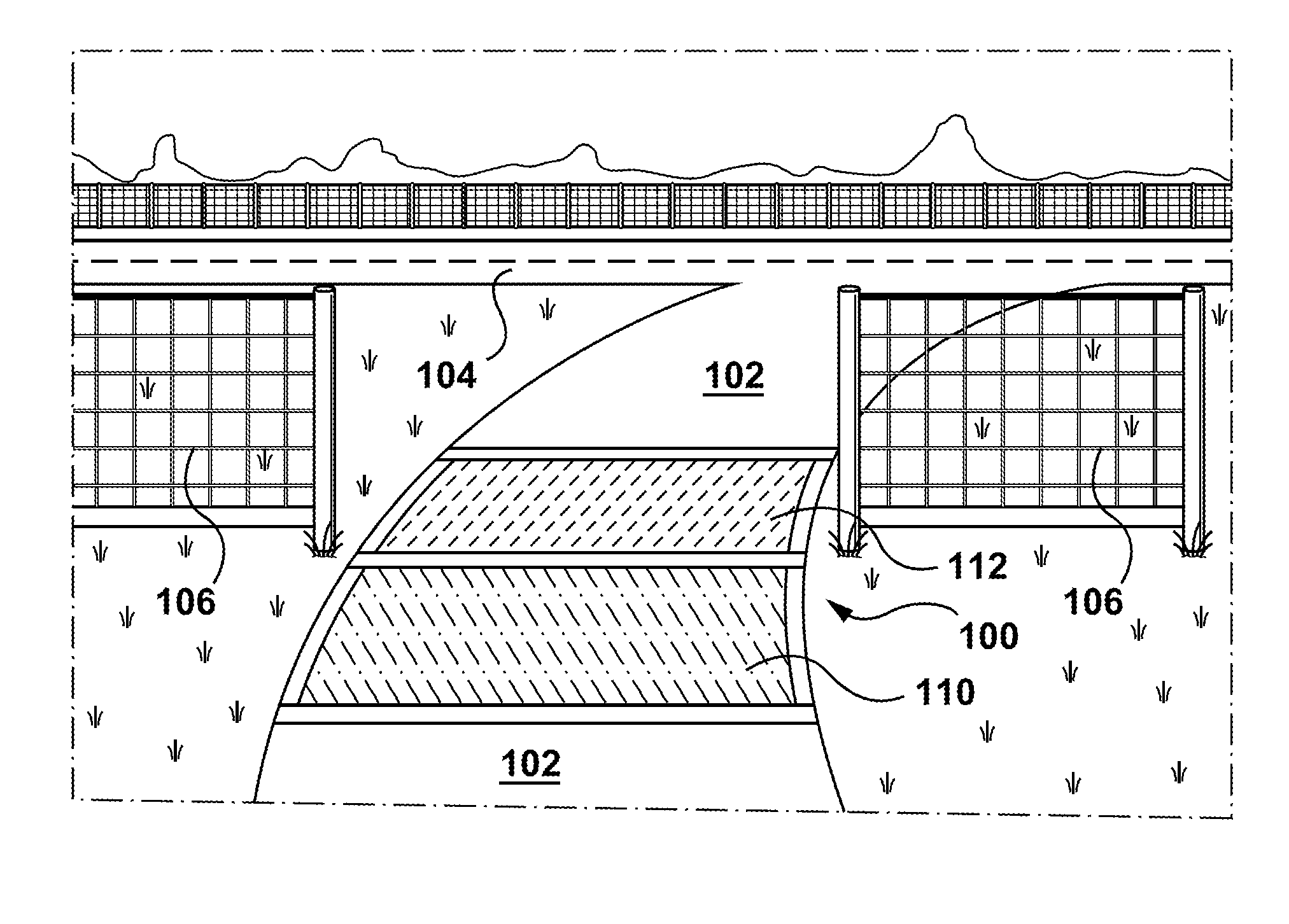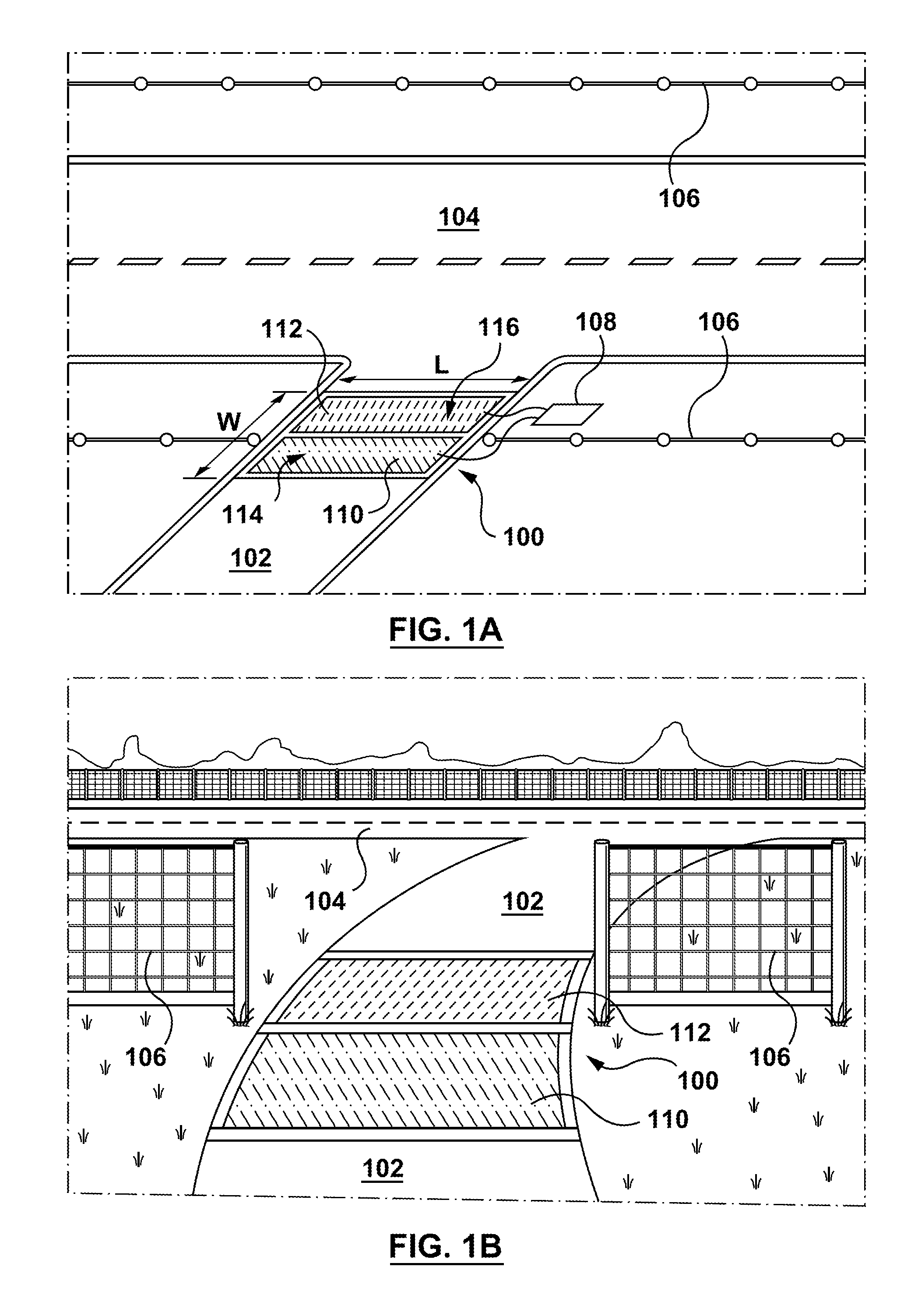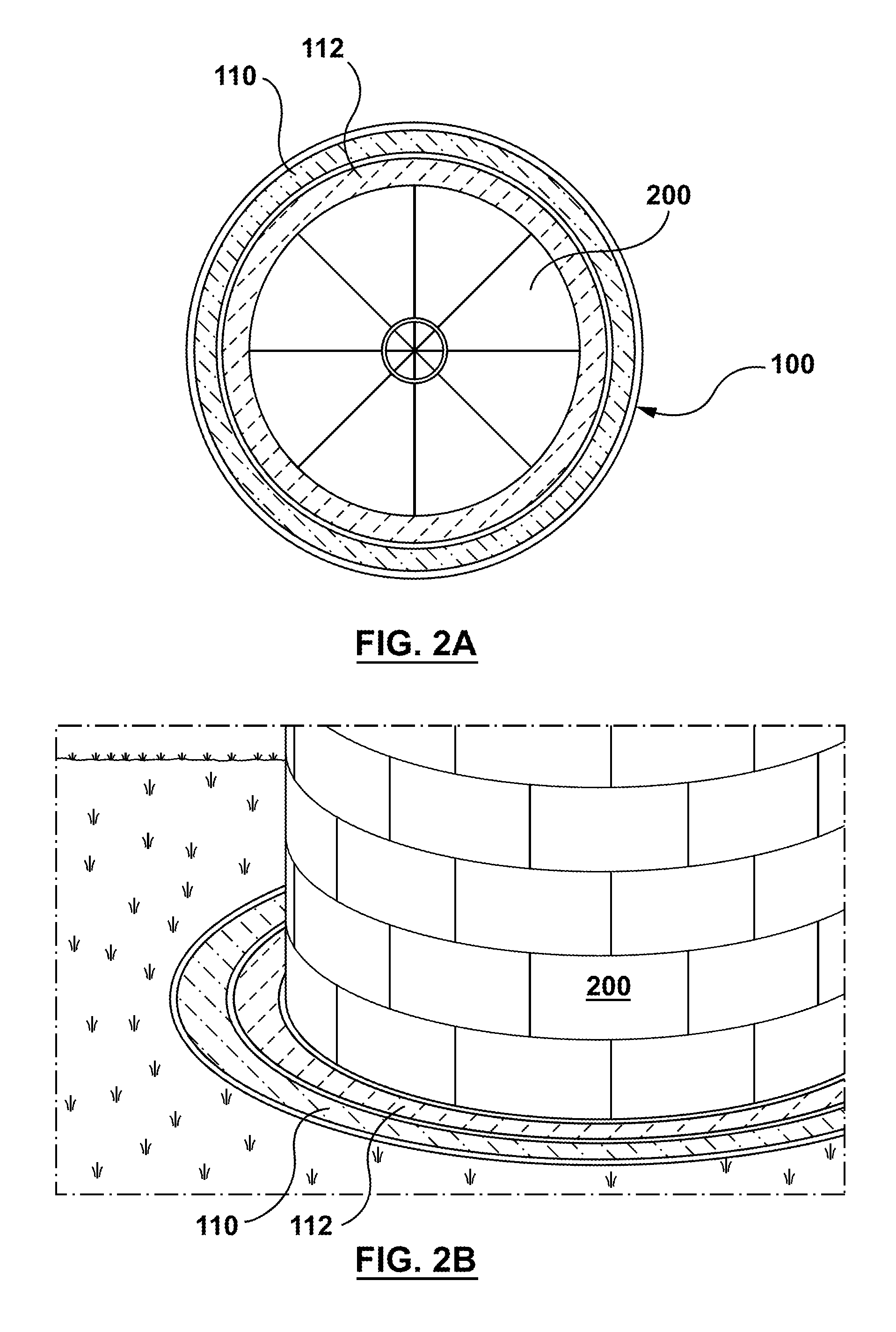Wildlife exclusion composition and assembly
- Summary
- Abstract
- Description
- Claims
- Application Information
AI Technical Summary
Benefits of technology
Problems solved by technology
Method used
Image
Examples
example 1
Manufacturing Instructions
[0089]The information below provides specific manufacturing instructions for at least some of the example embodiments referred to in the text above:
[0090]Step 1: Preparation of the primary mixer for the composition used to form conductive elements 110, 112:[0091]A 5 litre Hobart mixer was charged with 600 grams of spherical coke breeze grade 251 (Asbury Carbons, Asbury N.J., USA, hereafter ‘Coke 251’), and 300 grams of Barnes 49 silica sand (Orca Minerals, Waterdown, ON, Canada, hereafter ‘Barnes’), and mixed at low speed for two minutes.
[0092]Step 2: Preparation of the premix:[0093]To a 1 litre beaker on a hot plate was added 60 grams of the curing agent (Epoxy Part B), Jeffamine D-400 (Huntsman Intl., Woodlands Tex., USA), and 100 grams 58-20 grade asphalt cement (Coco Paving, Downsview, ON, Canada, hereafter, ‘58-28’). With a laboratory mixer running the temperature was raised to 159° F., and the components were stirred until the bitumen was fully dissol...
example 2
Electrical Conductivity
[0096]The electrical conductivities of a number exemplars prepared according to the procedure in Example 1, and using various ingredients are given in Table 1. The samples consisted of cylinder 4″ high, and 2″ in diameter. Components include several combinations of carbon sources, mineral fillers (here represented by Barnes sand) and bitumen, and commercially available bis-phenol epoxies and curing agents. The electrical resistance of these various exemplars is given in the right hand column of the table.
Identification of Components:
[0097]‘KER 828’ refers to Epoxy Resin grade KER 828, Kumho P&B Chemicals, Seoul, Korea[0098]‘D-230’ and ‘D-400’ refer to epoxy curing agents Jeffamine D-230 and D-400 (Huntsman Intl., Woodlands Tex., USA) respectively.[0099]‘Resinlab A’ and ‘B’ refer respectively to Epoxy and Curing agents EP parts A and B, marketed by Resinlab, Germantown, Wis., USA.[0100]‘Eponan’ refers to Epoxy Resin from Na Ya Plastics Corp, Taiwan ‘Oxbow’ refe...
example 3
[0101]This section provides information on the range of compressive strengths provided by different exemplar formulas. The compressive strengths of a number exemplars using similar sized samples and method used in Example 2, and using various ingredients are given in Table 2. The degree of cure is indicated by the compressive strength in pounds per square inch (PSI). The strength values were determined on 250 ml cylinders using a Schmidt model RL test hammer, and the results presented in the far right hand columns were obtained using two curing regimes. The second last column data were obtained by testing samples which had been cured for two days at ambient temperature, while (70° F.) while those in the last column were subjected to a temperature of 120° F.) for another four days.
TABLE 2IngredientsCokeDowKERResin-Resin-JeffJeffPSIPSIFormula251Oxbow58-28Barnes331828EponanLab ALab B23040070° F.120° F.3 / 12-I7022.57.5380056003 / 12-II80155475060003 / 12-III30303010150048...
PUM
| Property | Measurement | Unit |
|---|---|---|
| compressive strength | aaaaa | aaaaa |
| compressive strength | aaaaa | aaaaa |
| voltage | aaaaa | aaaaa |
Abstract
Description
Claims
Application Information
 Login to View More
Login to View More - R&D
- Intellectual Property
- Life Sciences
- Materials
- Tech Scout
- Unparalleled Data Quality
- Higher Quality Content
- 60% Fewer Hallucinations
Browse by: Latest US Patents, China's latest patents, Technical Efficacy Thesaurus, Application Domain, Technology Topic, Popular Technical Reports.
© 2025 PatSnap. All rights reserved.Legal|Privacy policy|Modern Slavery Act Transparency Statement|Sitemap|About US| Contact US: help@patsnap.com



